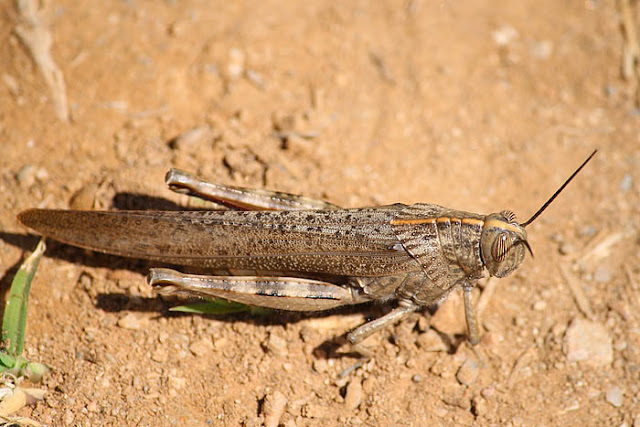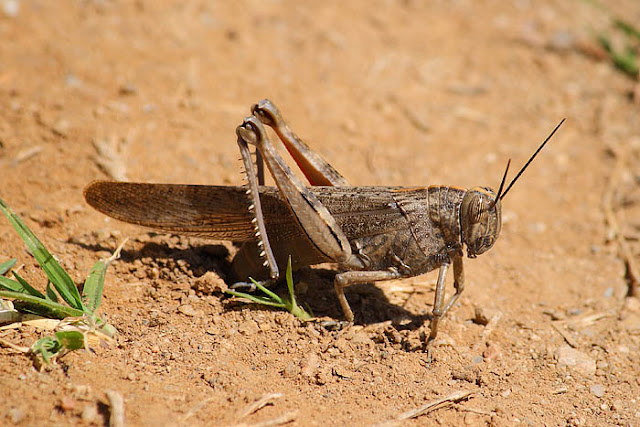Egyptian grasshopper (Anacridium aegyptium), or the 'Egyptian Locust', is a species belonging to the family Acrididae present in most of Europe, in eastern Palearctic, in the Near East and North and tropical Africa. It is one of the largest European grasshoppers: adult males can be up to 30–55 millimetres (1.2–2.2 in) long, while females are up to 65–70 millimetres (2.6–2.8 in) long. They are usually gray, brown or olive coloured, while hind tibiae being blue and hind femora orange. They have distinctive eyes with vertical black and white stripes. This solitary species is folivore and not harmful to crops. Adults can mainly be encountered in August and September in warm and dry habitats. Spawning occurs in spring just under the soil surface and the nymphs appear in April.
+female+spawning+in+the+soil.jpg) |
| Egyptian grasshopper (Anacridium aegyptium) female spawning in the soil (© LightColourShade. All rights reserved) |
+female.jpg) |
| Egyptian grasshopper (Anacridium aegyptium) female (© LightColourShade. All rights reserved) |
.jpg) |
| Spawning female Egyptian grasshopper (Anacridium aegyptium) (© LightColourShade. All rights reserved) |
I'm going to check this spot and try to capture the creature that's going to emerge out of these eggs.
| Egyptian grasshopper (Anacridium aegyptium) spawned foam (© LightColourShade. All rights reserved) |
Grasshoppers ad their ilk have fascinated me since I was very young. It's too bad that they've gotten such a bad rap - but I guess that close up they do look a bit sinister. I'm still trying to figure just were they fit into the spectrum of insects. And thanks for sharing.
ReplyDeleteAs a girl I loved catching grasshoppers and letting them go just to see them jump ;). They never looked sinister to me, but like all insects they're fascinating creatures, especially close up.
Delete